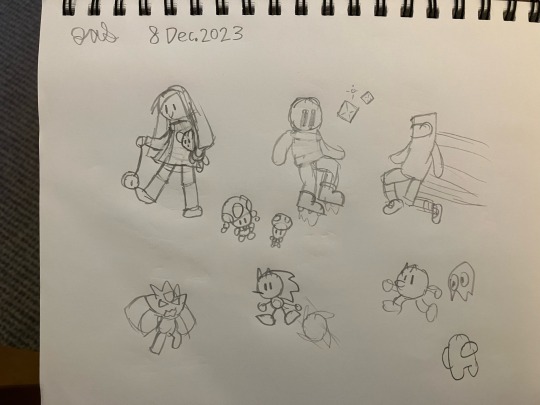#downwell
Text


x
#a vibe#baba is you#rain world#hollow knight#ori and the blind forest#fez#minit#downwell#idk the last one
753 notes
·
View notes
Text
Just some Fraymakers art I made on their Discord

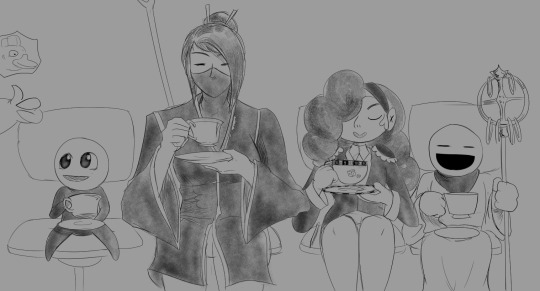
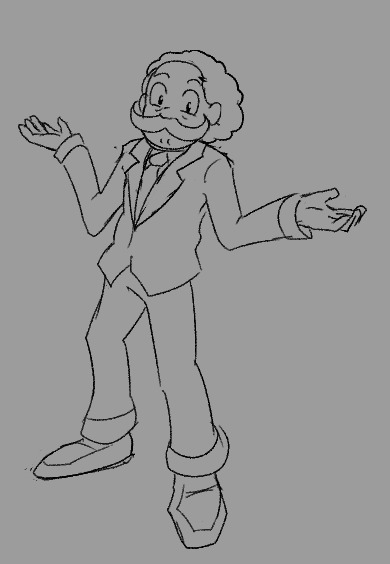
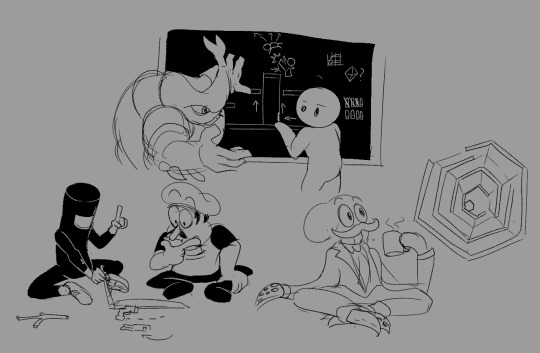
#art#my art#fraymakers#octodad#commandervideo#Bit.trip#nasb2#squidward#ultra fishbunjin 3000#stardrop#indie pogo#lady luck#dicey dungeons#shopkeeper#downwell#pizza tower#peppino#welltaro#super hexagon#kragg#rivals of aether#the watcher#slay the spire#basically a ton of indie characters ft. Squidward#lol
60 notes
·
View notes
Text
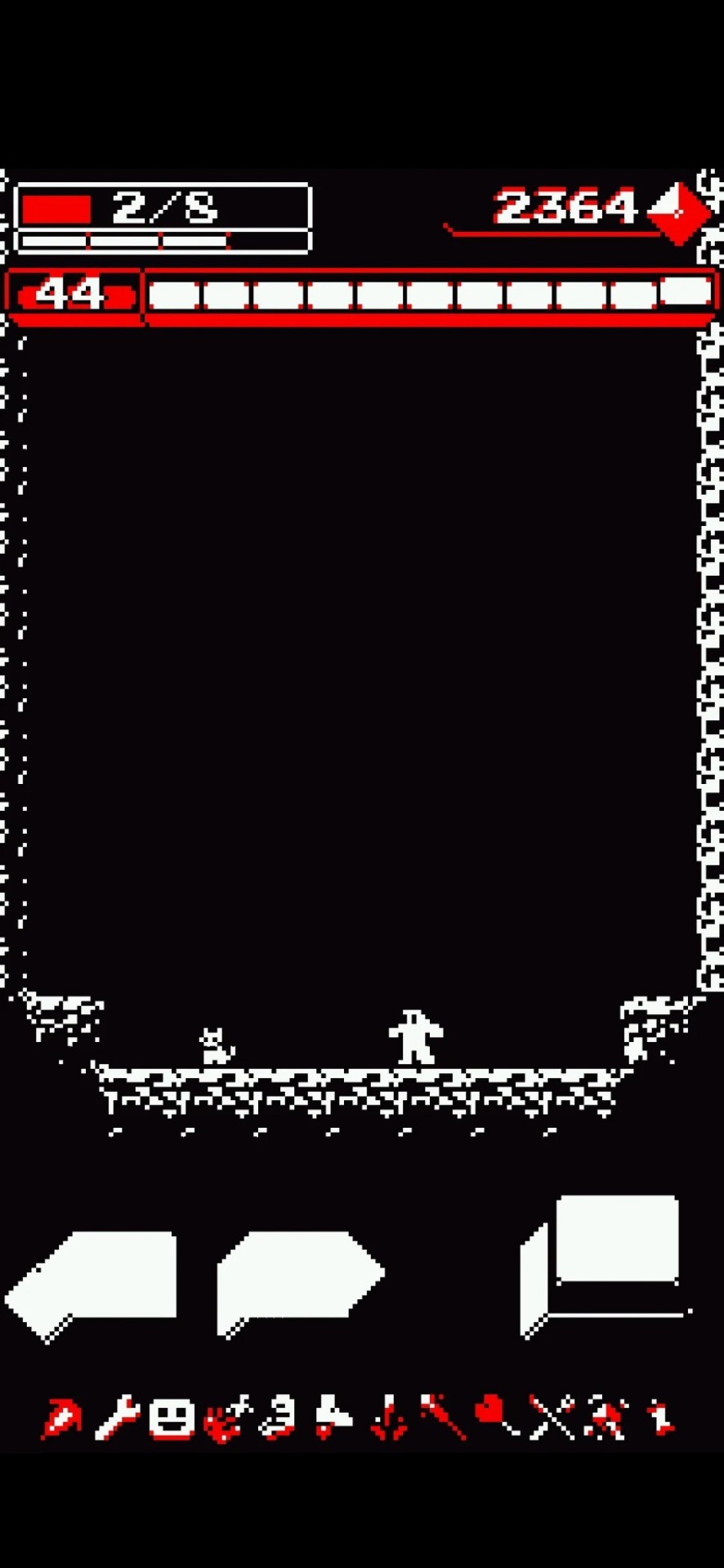
Cat from Downwell
47 notes
·
View notes
Text

Indie Game Color Wheel
I spent all day day drawing and editing the time lapse which you can watch HERE
#gaming#digital art#indie games#cuphead fanart#cuphead#downwell#neon abyss#gravity circuit#flinthook#artists on tumblr#world of goo#risk of rain 2#azure striker gunvolt#azure striker#videogame art#video games#color wheel meme#color wheel challenge
50 notes
·
View notes
Text
Tension, Flow, and Mastery in Action Games
Anyway here's my massive rant on game design, guest starring Mario, Kirbo, Ms. Celeste, Mr. Hollow Knight, John Miami, White (Neon Walter), err shove all night, and WELLTARO FROM HIT GAME DOWNWELL!!!
And Pizza Tower.
>------------------------------------<
I think that tension is the majority of what makes action based gameplay fun. Tension is derived from the need to make a move, particularly in deciding which one. Action games create higher levels of tension by giving the player limited time to make a decision, making the correct move uncertain, and judging how well they performed their actions. To examine further, I’m going to break down gameplay into four primary states. I’ll call them safe, hold, anticipation and window. Or shaw. That's a fun word, apparently it's synonymous with thicket.
Safe is when the player is completely safe, no tension. They could put their controller down and nothing would happen. When you’re on safe ground in a platformer, or behind cover in a shooter.
Hold is the equivalent of treading water, you’re holding a position, but you can’t stay there forever. The game generally requires that you do some simple action, like holding the climb button to cling to a wall in Celeste, or pogoing in Hollow Knight. When games try to pull extended tense sections, they often use this as the baseline to give the player time to think and recuperate, while ensuring that they know they aren’t out of the woods yet. Further this state often provides some kind of threat if they don’t get a move on. In Celeste clinging to walls drains an invisible stamina bar, and when you run out you’ll fall off to your death. In Hollow Knight you can technically pogo off a sawblade forever, but there's the unspoken threat of you messing up the pogo, screwing up the repeated simple action, and falling to your death, losing progress, so you better get to the next part before that happens.
The anticipation is defined by the player moving towards their next action. They can’t act yet, but sometimes the player is expected to line themselves up in preparation for when the anticipation state ends, which usually leads to the player finally having their window of opportunity to act, the time frame where they can actually perform their next action. Longer windows make pulling off the action easier.
For example a basic anticipation to window transition would be running up and jumping just before a ledge in Mario. If you jump too early you’ll fall into a pit, too late and the same will happen. If you pull it off during the window you’ll get across.
However anticipation does not always lead into window, for example when you’re descending from a jump onto a goomba, you use the anticipation to line yourself up, but there's no window. Once you land on him you’re set back to safe.
There’s many different ways action games use this kind of thing. It's fairly common for games that implement enemies as the primary hazard, like Kirby or Mario, to have the player turn the environment into safe zones as they go through. The player has to put themselves in anticipation and window as they say, dash towards an enemy to take them out, however they can do so whenever they please, because they’ve already cleared out all of the enemies behind them, and almost everything behind them is a safe zone.
On the other hand, some games space out their safe zones, giving the game most of the control over the pace. Thus the game can keep the pace cranked high to give the player less time to make decisions and make the gameplay more intense. Celeste and Downwell hold the implicit threat of falling to one's death over the player's head, having the player travel extended sections without being able to land on solid ground, increasing the tension by spacing out safe zones. Celeste allows the player to cling to walls for a decent bit of time, encouraging them to carefully plot out their actions but make a move before it's too late. In quite stark contrast Downwell gives gives the player a limited air stall ability, that can be used to hold them in place, allowing them to put themselves in hold temporarily, but the mechanic has many tertiary aspects in play to encourage the player to rely on it as little as possible, creating an intense adrenaline rush where you’re falling at max speed, pulsing the brake only as much as you need to steer.
Now, there's an interesting way this dynamic is changed when the player is forced to redo parts of a level. Maybe they got sent back to checkpoint, maybe they’re beating it again to satisfy a ranking system. Point is, when a player is made to repeat a level or part of a level they already beat, the way they approach it is different. I call it the flow to mastery transition.
The initial run is a pure flow run, what's important is that the player is unfamiliar with the path ahead of them, and they have to adapt on the fly. Their movement requires more care and planning. They make greater usage of the levels stills and holds to take everything in, and if they do not have control over the pace, then the tension spikes significantly such as in games like Downwell and Pizza Tower, as they have to use the few seconds the anticipation gives them to figure out their next move. The player's main focus is to avoid extrinsic flow breaks, which are factors outside of the core gameplay loop that serve as punishments for failure such as getting knocked back when you get hit and dying when that happens too many times, getting sent back to checkpoint, or the beginning of the level if you’re out of lives. The player needs to find a way through without dying.
The flow run begins a gradual transition to mastery the moment the player has to repeat an area, whenever they are sent back to checkpoint or the beginning of the level. The mastery is defined by the player using their preexisting knowledge of the level layout to try and find the most efficient route back to the new stuff. The player uses safe and hold zones much less, as they need to slow down less to take the level in, Safe and hold are treated as anticipation and window zones by the player, as they are much more likely to act as soon as the game lets them. Gameplay mainly centers around finding the perfect series of inputs to get through the set stage. The path to elucidating that series revolves around discovering the best route and picking out all of the little inefficiencies in gameplay.
The discovery is emphasized most when the player is uncertain of what the “correct” path, or the most efficient way through is meant to be. My mind flicks immediately to nonlinearity, more mazelike areas with many options, and we arrive at our first mastery case study, Hotline Miami. This game falls into the Celeste camp of 1 HP, checkpoints every five feet, trial and error your way through levels. As such the game puts all of its eggs into the mastery basket. The game is made up of a bunch of interconnected rooms, and you can hit up any adjacent one. Your goal is to hit up every room and kill everyone in it. Every death comes with the opportunity to either iterate on ones last strategy, or try a brand new one. If the player feels like they’ve hit a brick wall with their current strategy, they can choose to switch up the order in which they enter the rooms, and see if they can find a better one.
In addition to allowing the player to make their approach in any order they’d like, the game implements plenty of other tricks to increase the complexity and potential tension through new and uncertain choices of mastery development.
Guards are constantly on patrol, and if they stand beside a window or door you can get an immediate takedown. Should you wait for things to line up, barge in, or head for a different room. The important part is that the player has options, and that they are never forced to wait.
Further, the game implements what I’ll refer to as “soft blocks.” A hard block would be a wall, you can’t get through that. A soft block would be a long corridor with a guy wielding a shotgun at the end. You can’t get through there, with your fists at the least. You could go around and come in from behind, or if you grab a gun from another room you can blast him from the front.
The point is the player is provided with a number of complex choices they need to make, and a number of factors that make the optimal choice uncertain. They have many options, and all of them at least seem equally valuable.
The other interesting approach I’ve noted would be most prominent in Neon White. The game is a speedrun 3D platformer where you pick up guns represented by cards strewn across the level to shoot at stationary demons scattered everywhere, and once every demon is dead, get to the goal. Each level is designed for the player to initially blast through, then replay repeatedly to get a better time. Your first run will likely take you along the critical path. You see, the game takes place in a giant void, with a bunch of floating platforms everywhere. The player has many more options than just the ones that get them to the goal; they can get to any platform in jumping range, and many areas fill themselves with plenty of decorative platforms that seemingly only exist to make the place look nice. The critical path is communicated by the implied rules. The most famous example everyone likes to bring up is coins in Mario. They don’t do much, but the developer placed them in such a way that if you always follow them you should get to the end. Neon white uses demons and weapon cards in a similar fashion, where you’ll get to the goal with all demons defeated if you just follow.
Now, the reason this game is notable is because the critical path is rarely the fastest one. The game also throws in shortcuts. Shortcuts come from you defying the pointers outlining the critical path, and using the full extent of all options provided. You do not have to get every weapon, the only requirements for level completion are that you stand on the goal with all demons defeated. Further you do not have to get close to demons to defeat them, your guns are ranged weapons. The game just drills that mindset into you by placing cards and demons on the critical path. The player won’t have to go out of their way for extra weapons when they’re efficient with their ammo, and can skip parts of the critical path as long as their new route has line of sight with the demons.
The pointers give the level an immediate initial route, but with repeated attempts the player will gain greater understanding of all the options they have been given as their focus changes from simply getting through to getting through faster, and they will be able to discover the hidden shortcuts that rely on unused options placed throughout the level that the pointers constructing the critical path trained them to ignore.
In other words, to enhance the discovery of the mastery loop, you can either make your path an open maze, or a line with extra steps. As for the journey to perfection, to the perfect execution of inputs, there’s only one technique I know of to make that more interesting. I refer to it as intrinsic flow breaks.
Intrinsic flow breaks tend to be a short interruption worked into the core gameplay loop. They are less a failure on the players part as they are a measure of skill expression. While they have unique utility in individual games, they are generally used as something to minimize for speed incentivized players, but in both of these examples it comes packed with the bonus utility of making the game easier on your first try. They don’t necessarily have to stop the player, the main point is just that the player takes a small cut in speed.
Kirby makes for a pretty great example. In theory his ability to float over any obstacle should trivialize the majority of the game, however in practice the reduced speed from the float disincentivizes players from using it unless they absolutely need it. A metric defined by player skill where less confident players get an easy out of anything they can’t handle, while experienced ones use it as little as they can get away with so they can make good pace.
Pizza Tower shows what happens when you take a similar idea but crank the speed up to eleven. Peppino controls like a car with no brakes. Until you crash into a wall, you only ever go faster, so to help newer players get used to the games intense pace, intrinsic flow breaks are introduced. Moves where the player changes direction such as the turn around drift and super jump have Peppino pause for a moment before shiting direction, and allow newer players a second to get their bearings and break down the situation.
Pizza Tower likes to bake the intrinsic flow break into its catch all move for newer players, then add in more specific options that avoid the intrinsic flow break. For example you can avoid the pause during the super jump and turn around by choosing to climb walls instead of super jumping, or jumping off of them to turn around.
The way Pizza tower uses intrinsic flow breaks is especially notable because the methods to avoid them are context sensitive, they need a wall to pull off. They are not replacements, they are opportunities open to veteran players if they can spot them. They don’t change the gameplay, they build it up.
Other examples include having to punch enemies vs maintaining a toss combo in Gravity Circuit, bashing into enemies vs spinning through them in Anton Blast, whatever Plague of Shadows is doing. Made a whole video on that one.
Now, extrinsic flow breaks are what tie the flow and mastery together, so we’ll need to do a closer examination into extrinsic flow breaks in order to understand how flow and mastery play off each other. Just as a refresher, extrinsic flow breaks are the game's explicit failure conditions, such as getting hit and dying. They are what the player is primarily focused on doing during the flow run. Extrinsic flow breaks can be understood as two elements. The buffer, and the threat. The buffer is a degree of leniency the game extends to the player, allowing them to be inconsistent and still pass through. Most commonly expressed through health bars, their length is defined by the level of error and inconsistency the game is expecting and willing to let the player get away with. By allowing the player to slip up without losing progress, the constant introduction of unforeseen obstacles and by extension the flow run itself, is maintained. In addition, typically a degree of tension is added as their buffer shortens and they reach closer to the threat, which is of course what the game threatens to do if the player burns through their buffer. Usually sending the player back to checkpoint, it exists to demand a certain level of performance from the player. If the player's performance doesn’t match the difficulty curve, they’re made to repeat it until it does. The intention being that the increased skill from the practice will get them there, which develops mastery.
Now the following examples are just individual case studies. A small showing of games that use certain ratios of buffer to threat to accomplish a certain goal. They are in no way representative of the only thing that can be done with that arrangement.
Low health demands precision. In Mario games you have somewhat infrequent checkpoints, but also not terribly many hazards. The player has to be somewhat careful with their moves, but they aren’t expected to die terribly often, so the game doesn’t place checkpoints very often, as if the player does die they were likely either playing too risky, or had a simple mistake. Either way the player is unlikely to grind the level out, and the game focuses on easygoing flow. On the other hand Celeste only lets you get hit once and places spikes everywhere. As such it has to place a checkpoint down every couple of feet to ensure that the player keeps making progress. If the checkpoints were too far apart, then the player would surely master the first portion of the stage completely long before they even got close to the new stuff. The fun comes from the growth, but eventually the player is just grinding for a lucky run where they don’t screw anything up. The game ought to move the player along before that. Celeste can be a bit anxiety inducing at first, but when you repeat and practice the feeling transforms into a much more easygoing zen as the runs mesh together.
High health and somewhat frequent checkpoints brings to mind games like Shovel Knight and Hollow Knight, which have more focus on the player engaging the enemies with their combat mechanics as they traverse the world, and getting hit is a fairly expected part of the formula. Combat is a bit less precise compared to just platforming. Platforming tends to be about executing the correct path, while combat is more about avoiding and outputting damage. Platforming has very well defined anticipation and windows, whereas combat forces the player to constantly determine when it is safe to act through careful consideration of their current health, the enemies position relative to their own, lingering hazards, the opponents patterns, etc. The games have to place a fair number of checkpoints to catch the player if they fall in combat.
I can’t think of what high health infrequent checkpoints might represent from a general standpoint. Probably because the player would likely use the extra health to play riskier then die pretty far in and lose a bunch of progress, and that sounds very annoying.
The main issue I have with how extrinsic flow breaks are implemented with the traditional health and checkpoints system is that it’s rare that I find a game that can make both its initial flow and mastery development fun. Games that focus on flow often treat mastery as an obligation for players that can’t keep up. Without the considerations to extend mastery development, the player gets to perfection way too fast, and the mastery stops being fun. The mastery gets in the way of the flow.
On the other hand, games that put the development of mastery at the forefront lose the appeal of the flow by constantly interrupting the stream of new content with mastery development. I’d like a minute to take in all of the new stuff but the game keeps throwing me back to the start.
In search of a game that can pull off both, we come back to Kirby and Pizza Tower, as they both try to have their cake and eat it too. They try to make their flow accessible and easy to maintain and their mastery challenging with strong depth.
They put a lot of slack on the line, Kirby’s float will theoretically let you cheese anything as the player can just fly over any obstacle, ignoring the ability system will introduce a much simpler combat loop for boss fights, and the player is given a generous health bar. Peppino from Pizza Tower has infinite health, and can’t die until the escape sequence in every level, which does put the player on an explicit time limit, but gives them enough time to escape twice over. However, both of these games implement elements to incentivize experienced players to play faster, and tighten the restrictions for goals beyond completing the game.
Kirby goes the simple route and records the player's time. Oftentimes the game will implement side modes to show the player how fun it is to go fast. There will be obstacle courses and boss rushes that will give you medals if you can finish them under a certain time. The game knows it's more fun when you go fast, and tries to make sure the player gets that.
Pizza Tower has a more complex version achieved through its level rankings. In order to get the game's best rank, P, you need to meet a few requirements. You need to get a certain number of points by collecting objects throughout the level, complete all 3 secret rooms, grab the hidden treasure, complete a lap 2, and maintain a singular uninterrupted combo from the first room to the exit door. Your combo starts when you kill an enemy. It gives you seven seconds, and resets if you kill another. That means that you have to be constantly running as fast as you can to get to the next target before your combo runs out. On top of that, needing to do a lap 2 puts the excess time the game gives to newcomers to good use, significantly tightening the clock.
The most subtle mechanic however is likely the points dynamic. Points are received through killing enemies and collecting minor collectibles scattered through the level like coins in a Mario game. Smaller amounts are scattered in patterns to guide the player, but many more are hidden in big stashes throughout the level.
Because the smaller coin-like collectibles are intended to guide the player along the critical path, the player is going to miss plenty of them as they take shortcuts. This means that they’re already running tight on points, and if they need more they’ll need to find the stashes that can be collected most efficiently to make up for those lost points.
Further, the player can lose points through taking damage, and if they do they will likely have to get some of the less easy point caches placed later in the level, that may require the player perform a stylish trick or the like. The tension and challenge is enhanced by the fact that they haven’t been practicing that specific trick as they repeatedly attempt the level, which brings it much closer to the flow than mastery as the player needs to adapt to their slip up.
These games give the player a lenient formula, but ratchet up the challenge by having the gameplay radically change when you try to appease conditions that only veteran players will care about. Level rankings are about giving the game a broader range of appeal, as the player will either care, and go for the best one, or they won’t and waltz on through content with what they got. Games can keep their flow separate from their mastery development by splitting them into two separate experiences. This not only maintains the sanctity of the flow run, but makes the mastery development optional for those who strongly resonated with the game.
One method to do this that I didn't mention would be the pseudo New Game Plus, where you replay the whole game, same levels, but with a new character designed to speed through them. I know of three examples, Meta Knight from Kirby Super Star Ultra, Plague Knight from Shovel Knight: Treasure Trove, and The Noise from Pizza Tower.
To put it succinctly, Shovel Knight can jump 4.5 tiles horizontally and vertically; Plague Knight can fly. In fact all three of the mentioned characters are able to fly, in a platformer not designed around that. These games take characters with certain limits, design levels around those limits, then once you beat the game, let you replay those same levels as a character without those limits. This naturally increases the appeal of both the initial flow run and mastery development. The flow run is renewed as while you are somewhat familiar with the level layout, it’s been a while since you beat the first level, and further you don’t know how the new character navigates the first level. The mastery development is renewed because the level geometry has massively increased shortcut potential now that certain restrictions have been removed.
The new characters' much more expansive and freeing movement capabilities remove the emphasis of how the level wants you to navigate it, and places the emphasis on what your character can do.
#game design#video games#rant post#essay#super mario#kirby#kirby super star ultra#kirby super star#celeste#hollow knight#hotline miami#neon white#shovel knight#welltaro#from hit game#downwell#pizza tower#peppino spaghetti
12 notes
·
View notes
Text

i was so happy when i found the palette swaps in elechead that were references to tower of heaven and downwell
#we love short pixel art color-limited indie games!#tower of heaven#elechead#downwell#eid (tower of heaven)#elec#welltaro
57 notes
·
View notes
Text
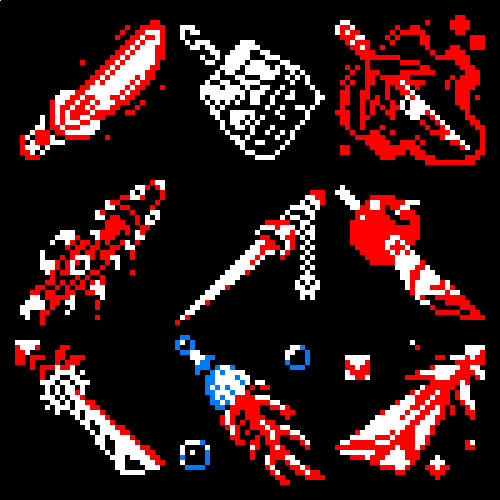
9 more swords for swordtember!
Downwell themed this time :D
19 notes
·
View notes
Text
Round 1
Please Listen to the songs
Downwell Idea
Mysterious Shrine
9 notes
·
View notes
Photo

Been in a fighting game mood since I got back from Combo Breaker. Here's an assortment of fighters woah.
characters from top to bottomKinoko from Ultra Fight Da Kyanta 2
Wizard from Your Only Move is Hustle
Shovel Knight playable in Rivals of Aether
Welltaro playable in Indie Pogo
Captain Cat Kit from Rakuga Kids
Neco Arc from Melty Blood (I never played this one oops)
#shovel knight#rivals of aether#welltaro#downwell#Indie Pogo#neco arc#melty blood#Captain Cat Kit#Rakuga Kids#Kinoko#ultra fight da! kyanta 2#yomi hustle#your only move is hustle#E's Art
10 notes
·
View notes
Text

Downwell - Soundtrack by Eirik Suhrke (2015)
6 notes
·
View notes
Text
More Fraymakers art I made in their Discord
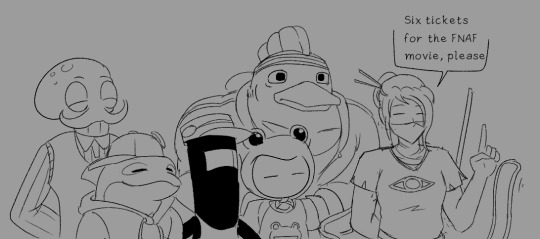
Including a tribute doodle to the Workshop community

#art#my art#fraymakers#octodad#commandervideo#bit.trip#ultra fishbunjin 3000#slap city#ittle dew#welltaro#downwell#roa#rivals of aether#orcane#the watcher#slay the spire#and everything in the workshop doodle that I refuse to individually mention
25 notes
·
View notes
Text
Challengers of Smash, Bonus Round #3:
Fraymakers has run out of characters for the time being, with a score of 0-6. It did get a couple of votes, but it wasn't enough, but luckily, there is one poll left for them.

#ultra fishbunjin 3000#slap city#welltaro#downwell#orcane#rivals of aether#commander video#bit.trip#octodad#challengers of smash#the watcher#slay the spire
3 notes
·
View notes
Photo
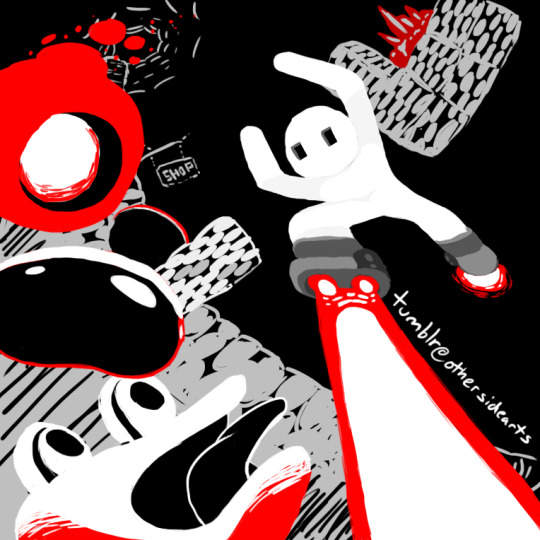
old fanart I did for downwell, from when I first started using my tablet
14 notes
·
View notes
Text
I wrote this script for a video essay, but I'm worried that it sucks and frankly I have other shit to work on, so I'm gonna dump it here and maybe come back to it later if anybody thinks its actually worth being made into a video.
Flow, Speed’s Complement
Flow is your ability to play the game at an uninterrupted pace. If you touch an enemy, do you get back up and keep running, warp to the last checkpoint, or do you die, watch a small death cutscene, and get warped to the last checkpoint. This will be a breakdown/analysis thingamabob of points where the game intentionally breaks the flow for various reasons.
I’ve split flow breaks into two major types: extrinsic and intrinsic. It’s important to note that flow breaks are not something to hunt down and exterminate in the goal of making the perfect speed game. They are useful tools, but if you aren’t careful they get incredibly frustrating
Extrinsic flow breaks usually come into action when the player slips. They’re factors outside of the core gameplay loop that serve as punishments for failure such as getting knocked back when you get hit and dying when that happens too many times.
They usually punish the player by wrenching control away and sending them back a bit. Sending the player back is usually considered a necessary evil, as while it does feel bad through cutting into the player's progression and harming the flow, it forces the player to redo and practice a section to prove their mastery which will make the game more fun in the long run. Most games design themselves around the player beating the level once, and as such want to make sure the player has done it properly by the end.
I find it pertinent to note however that other games like to design themselves around beating the game again to prove your mastery. Pizza Tower and Ultrakill come to mind. Both of these games have a ranking system, and are clearly designed around the player returning to their levels once they have beaten the game to get the best rank. As such PIzza Tower and Ultrakill are more lenient with allowing the player to stumble their way through a level. Pizza Tower even makes the player immortal for most of the game. This goes a long way to making these games both exhilarating unbroken thrill rides for the people who play through it once, and tough as nails tests of personal mastery for those who go back for a second round. The first run maximizes flow, while the second ramps up the challenge.
Getting back on topic, taking control away from the player on the other hand, is something that should generally be cut out as much as possible. In ye olden days, you die, and you have to wait for an entire animation to play, then you get warped back to the last checkpoint. That kind of waiting builds up and gets on the players nerves. Ultrakill pulls up this screen when you die. The great thing is, that the second it appears you can press the shoot button, you know, that thing your finger is already on, to immediately load state back to the last checkpoint. It’s fast, snappy, and intuitive. No waiting, no menuing, just get back in the game. If the player not being able to play isn’t a mechanic of your game, make them able to play as fast as you can.
Getting knocked back was originally used because games wanted to give enemies a sense of collision, discourage damage boosting, and clearly signify to the player that they’ve gotten hit, but you’ll want to consider if that’s something your game actually needs. For example, how lenient is your health system? Cuphead gives the player three hits per level, and that number only goes down. The player is already avoiding damage at all costs and knockback is unnecessary. In Pizza Tower you regularly break the sound barrier, knockback is an obvious signifier that the player has gotten hit, and a significant enough punishment on its own in a game about going fast that the game gives the player infinite HP. You’ll have to apply your own judgment.
You want to put consideration on what conditions trigger your extrinsic flow breaks. Putting some slack on the line allows the player to not be perfect, and still have an experience that flows well. Health, checkpoints, and lives are very common leniency systems that allow the player to screw up a few times before they get sent back. Personally, I love to play games that maximize flow to let you play fast and loose. Crash into shit, get up, and keep running. Precision platformers are not my jam. As such when health is implemented into games, I’ve usually preferred it when it is viewed as a resource to be managed, not an ever looming axe pendulum telling you to cut the pace and be careful.
Meta Knightmare has a fun example. The game is a rerun of the main campaign, except now you’re in speedrun mode. The games put a timer on your head and you need to bolt to the finish. When you kill enemies, you get MP or meta points. When you need to heal, you have two choices. You can either deviate from the main path a bit to grab a health pickup, still moving at the same speed but dropping your time, or burn some Meta Points, saving time but losing a resource that could be used on other stuff. It integrates itself into the systems in a fun and unique way.
I mentioned lives too though. They’re essentially a cap on the number of times you’re allowed to be sent back to the checkpoint before the game boots you out of the level to try again. As a mechanic they allow the player a few deaths, create tension when they’re low, and force the player to redo things they haven't mastered. Lives are most associated with the traditional Mario system, which I’m not especially fond of. Allowing the player to just stockpile the things over the course of the game gives a lot of inconsistency to when the player will be punished for repeated mistakes. At the final boss players could either have a thousand lives or two. The player can either stumble their way through tripping on every step, or smash their head into the wall until it breaks. I like Splatoons system much more, where the player is given 3 lives per level. It gives the lives system some proper consistency and lets its strengths shine.
—
Intrinsic flow breaks are mostly addressed in the speed games that I’m so fond of. The main idea in these games is keep going, keep going, never stop, and intrinsic flow breaks exist to give the player something to minimize through their gameplay.
For a simple example, In Gravity Circuit enemies are everywhere, and kinda gotta kill anyone in front of you. To do that you can either punch them a few times, or you can throw a dead guy at them. Punches slow you down, as you have to sorta stand there as they die, sometimes dancing around their attacks. The basic idea is that after a few fistings the enemy gets exhausted and you can pick them up and fucking yeet at the next guy, then pick that guy up and do it all over again. Throwing opponents is seamless and gives the game a nice flow.
You try to keep the chuck train rolling to avoid that intrinsic flow break of beating a man to death with your bare hands as much as you can. You have to sometimes, but do it as little as possible.
Now for the subtleties, I’ve found two factors you want to avoid: Stops and Slows. Stops are interrupts that make you physically stop in place. Gravity Circuits punches are a stop, so is Peppinos shotgun in Pizza Tower. It can be brief or a bit drawn out. Point is it kills your momentum. Slows are when you have to slow down, either you physically move slower, or you take a route that gets you to the place you want to be slower. For example earlier when I mentioned Meta Knight taking a slight detour to grab food, that was a slow.
You press a button to throw a bomb, hold it and you charge up a bomb blast. This blast launches you forwards into the air, and you move faster. You can use a double jump to remain in the air, but once you land you’ll slow down to normal speed again. Interestingly, when you throw a bomb in the air, if you try to charge another blast, you’ll brake and lose all horizontal momentum, then fall to the ground. Midair bombs are a stop, landing and starting the blast charge on the ground is a slow. It’s preferable to land than brake. However your decision making is decided by your need to land. If you try to charge a blast in midair, you will land before you have a charge. You need to find safe spots, which drives your choices. You blast forwards, and you need to recognize whether you want to keep flying and let yourself land where you will, or stop and take the immediate safe ground. Take the risky slow or the safe stop. All of this to avoid the extrinsic flow break of getting hit. These actually tie together quite nicely, as you can charge up a bomb blast while getting knocked back. You still don’t want to get hit, but if you do you can smoothly re-enter the game's flow state.
There's no defined way that it should be done. Games just come up with their own ways to implement them into their gameplay loop, by making the game about trying to optimize their usage. In Downwell you rack up combos by jumping on the heads of enemies. To do this you can press shift to fall more slowly, but you slow down by shooting bullets out of your boots, and the more you shoot unnecessarily, the more likely you kill the enemies and prevent yourself from landing on them.
Further, downwell has a multiplier mechanic called Gem High, where any gems you collect from bouncing on enemies are multiplied for a limited time, so you need to bounce on as many enemies as you can, as fast as you can. Timers work well with getting the player to cut down on slows.
Pizza Towers Gustavo and Brick brings in a very intriguing example of letting the player cancel a move that has an intrinsic flow break at the end of it by using level gimmicks. The double jump has the player crash into the ground, which stuns them for a bit, but there are these mushroom trampolines that cancel the animation.
Once again I don’t really have any clear cut standards to explain, just fascinating examples to potentially take inspiration from. Flow breaks are a very engaging element that help the player appreciate the flow state even more. Extrinsic ones exist to strongarm the player into playing the game properly, while intrinsic ones give games with a constant flow an interesting mechanic to play around. If there's any unmentioned games that you feel play around with or challenge these principles feel free to share.
#game design#pizza tower#plague knight#shovel knight#kirby super star ultra#meta knight#meta knightmare#gravity circuit#downwell
18 notes
·
View notes
